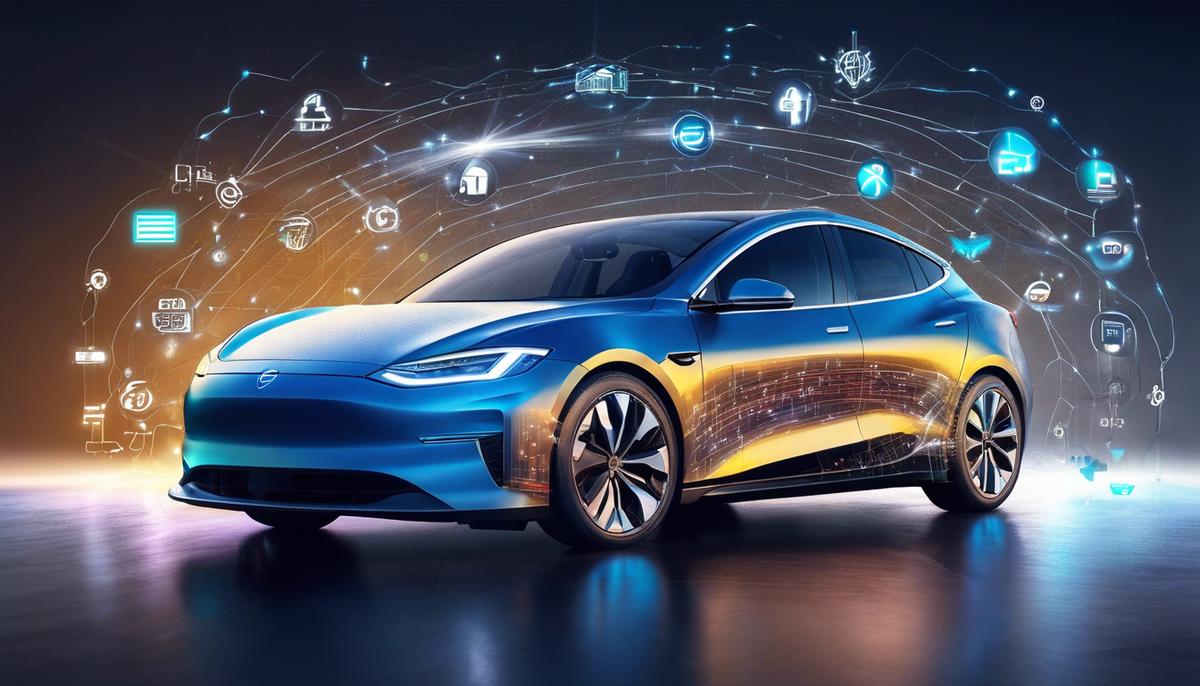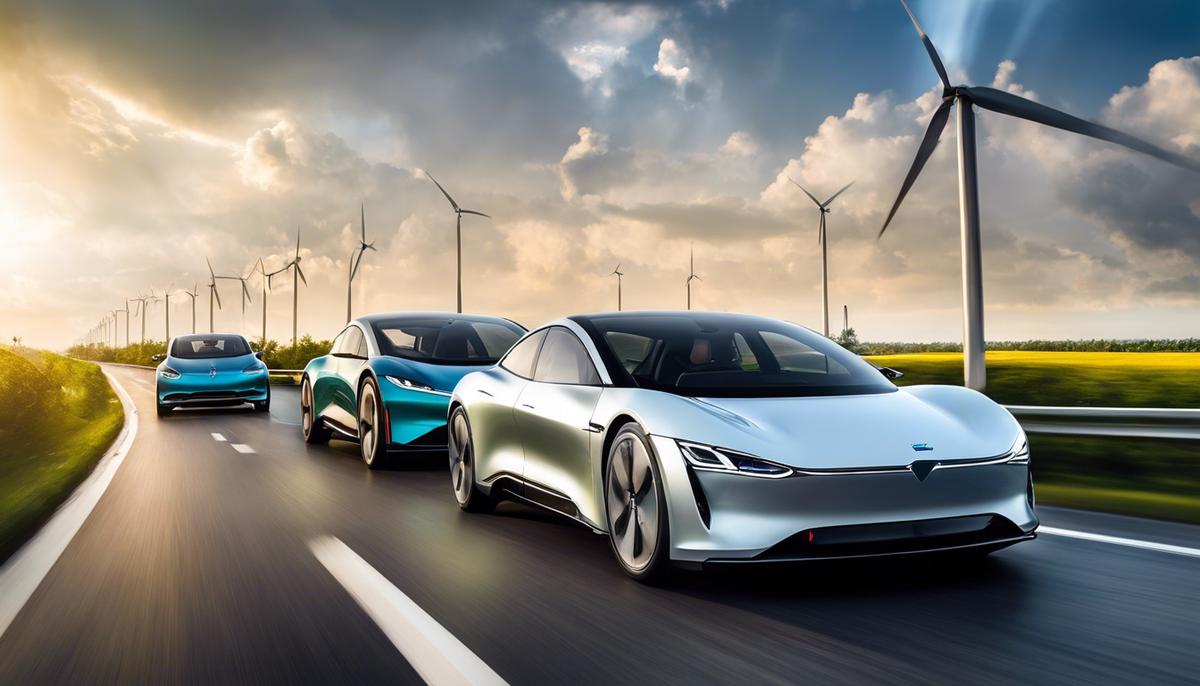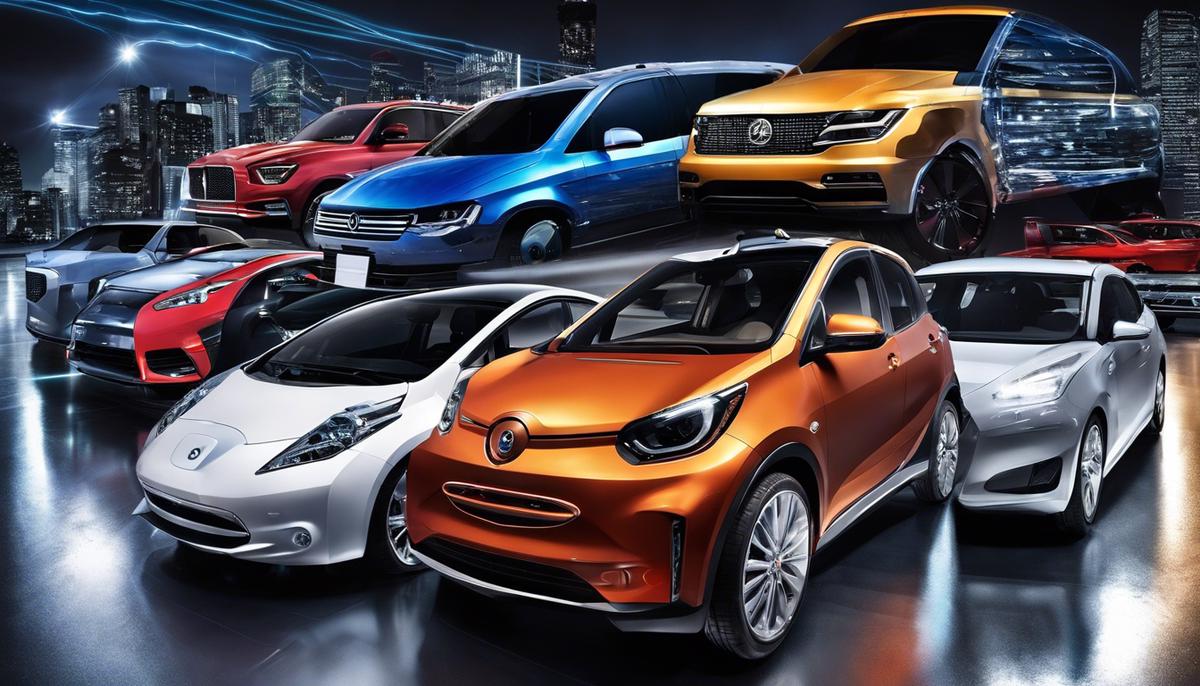The automotive landscape is embarking on a transformative journey with electric vehicles (EVs) and high-tech cars steering the course. This electrifying shift is not only redefining transportation but also reshaping the dynamics of auto insurance. As EVs and vehicles laden with cutting-edge technologies become more prevalent, their impact on insurance costs has emerged as a critical issue for drivers and insurers alike. The fusion of sophisticated electrical systems, driver-assist technology, and complex vehicle software has ushered in a new era of challenges in risk assessment and repair costs. Understanding these changes and their repercussions is essential for discerning the future trajectory of the insurance industry in a world increasingly driven by innovation.
Impact of EVs and High-Tech Vehicles on Insurance Costs
Electric Dreams and Data Streams: The Impact of EVs and Tech on Insurance Rates
In the fast lane of today’s business highway, electric vehicles (EVs) are not just turning heads—they’re changing the rules of the insurance game. Buckle up, because we’re going to take a turbo-charged tour of how EVs and cutting-edge technology are driving insurance premiums into new territory.
Let’s start with EVs. These sleek machines promise a greener future, but they also pack a hefty price tag, especially when it comes to their batteries. A fender bender in an EV might lead to more than just swapping paint—it could mean shelling out big bucks for battery repairs or replacement. Insurance companies are taking note. The potential for these costly fixes propels premiums higher than those of their gas-guzzling cousins. We’re talking numbers that would make even the most seasoned investor raise an eyebrow.
Now, slam the brakes for a second and consider the tech that’s baked into modern EVs. We’ve got enough sensors and gadgets to make a spaceship jealous. While these innovations can prevent accidents—think automatic emergency braking or lane-keeping assist—they also mean more complex and pricier repairs when things go south. So, while these features might initially impress, they also contribute to a thicker stack of insurance paperwork with premiums to match.
On the flip side, what happens when EVs and tech start to mingle and affect insurance in a positive light? Imagine a world where your vehicle, loaded with connectivity and data-driven insights, tailors your insurance rate to your driving prowess. Good drivers could reap the benefits of lower premiums, thanks to the all-seeing eyes of onboard computers tracking every smooth turn and gentle stop.
Moreover, the insatiable appetite for data by insurers can now be satiated with the feast of real-time information streaming from EVs. This data buffet isn’t just a one-way street; it empowers proactive risk assessment, rewarding meticulous maintenance and responsible driving habits. Companies are shifting gears to usage-based insurance (UBI) models, where how you drive dictates what you pay. By actively monitoring their EV’s performance and habits, drivers might secure themselves a sweet deal on their insurance.
In conclusion, while EVs and high-tech advancements in vehicles might initially cause insurance premiums to accelerate faster than a sports car, there’s a silver lining. The integration of advanced technology provides unprecedented opportunities to tailor policies to individual drivers, possibly decelerating premiums for the tech-savvy and safety-conscious. As with any innovation, there’s an evolution in costs—insurers and consumers alike are just starting to test drive this new era.

Insurance Companies’ Response to High-Tech Vehicle Trends
In the fast-paced world of high-tech vehicles, insurers are not just adapting; they’re leading the charge with innovative strategies that carve new pathways to profitability and customer satisfaction. So, what dynamic approaches are being embraced to stay ahead?
One strategy is the integration of telematics and real-time data analytics. Insurers are tapping into the power of big data to more accurately assess risk and tailor policies to individual drivers. By analyzing patterns in speed, braking, and driving times, insurers can offer personalized rates that reflect the true usage of the vehicle.
Next, we’re witnessing the rise of strategic partnerships between insurance companies and automakers. These alliances foster a seamless exchange of data and insights. This symbiosis permits insurers to have a more precise understanding of vehicle performance directly from the source, thus streamlining the claims process and enhancing policy offerings.
Predictive analytics also play a crucial role. Insurers are using sophisticated algorithms to anticipate future trends and potential risks associated with high-tech vehicles. This forward-thinking approach empowers insurers to stay a step ahead, creating solutions for risks before they become rampant issues.
Furthermore, insurers are developing comprehensive cybersecurity policies for high-tech vehicles. As vehicles grow more connected, they become more susceptible to cyber threats. Proactive insurers are offering products that cater to the digital integrity of these advanced machines, thus safeguarding consumers from potential cyber attacks and data breaches.
Finally, there’s the foray into mobile applications and customer-centric platforms that streamline everything from policy management to claims filing. These user-friendly interfaces cater to the tech-savvy consumer of today, who expects convenience at their fingertips.
In conclusion, the insurance industry is not just rolling with the punches; it’s throwing a few innovative jabs of its own. By investing in data analytics, forming strategic alliances, employing predictive models, tackling cybersecurity, and enhancing customer interaction—insurers are not merely keeping up with the high-tech vehicle revolution, they’re driving it.
Investor Perspective on Insurance Stocks Amidst the EV Boom
Now, let’s steer into the fast lane and examine the burgeoning investment opportunities, as electric vehicles (EVs) charge ahead, changing the insurance industry landscape in their wake.
Investors with their fingers on the pulse recognize that the integration of telematics and real-time data analytics is a pivotal move. Savvy investors are watching how insurance companies leverage this gold mine of vehicle data to tailor premiums. It’s about betting on the players who are not just collecting data, but those transforming it into actionable insights and competitive pricing models.
The road doesn’t stop there. Forward-thinking investors are eyeing strategic partnerships between insurance companies and automakers. These alliances could be key in driving customer loyalty and smoothing out the bumps in the insurance process. Insurers that carve out symbiotic relationships with EV manufacturers are positioned to offer more tailored coverage options and potentially, a smoother claims process.
Predictive analytics is another turn in the road attracting investor attention. Insurers that harness the power of AI to anticipate future trends and risks related to EVs become market leaders. Investment goes to those innovating with predictive models for EV-related claims, battery life cycles, and the impact of climate change on driving patterns.
As EVs become more sophisticated, comprehensive cybersecurity policies covering high-tech vehicles are growing in importance. Stocks of insurers that craft policies to protect against digital carjacking and other cyber threats will likely see a bullish trend as cybersecurity becomes a unique selling point in EV insurance.
Finally, investors are flocking to insurance companies developing mobile applications and customer-centric platforms. Carriers that dial in on a seamless, app-based insurance experience – including claim filing, premium adjustments, and real-time support – are the ones turning heads in the investment community. Look for companies that merge tech-savvy solutions with exceptional customer service.
In the EV race, it’s clear that those weaving through the intersection of technology and customer delight are the stocks catching the eyes of those looking to power their portfolio into the future.

Future Predictions for the EV Insurance and Tech Markets
Crafting the Future: Emerging Synergies Between Auto Insurance and EV Tech
In the dynamic world of electric vehicles (EVs) and auto insurance, change is the only constant. As the landscape evolves, savvy industry leaders are pinpointing the necessity for enhanced customer engagement and the adoption of cutting-edge technology to stay competitive.
One area of focus is the integration of telematics and real-time data analytics in the insurance industry. This innovative approach promises not only to refine risk assessment but also to provide more personalized insurance experiences. By harnessing granular data related to driving patterns, insurers can develop tailored plans that reflect actual vehicle usage, resulting in potentially significant savings for conscientious drivers.
Strategic partnerships between insurance companies and automakers are coursing through discussion boards in the echelons of the business world. Forging alliances paves the way for streamlined processes, from the integration of factory-installed telematics systems to the co-creation of insurance products that cater specifically to the features and unique requirements of EVs.
Predictive analytics is set to make bold strides in pre-empting future trends and risks associated with EVs. Insurers are leveraging these insights not just to anticipate claims related to EV-specific contingencies, like battery life cycles and the impact of climate change but also to innovate proactive strategies that mitigate these risks.
As vehicular technology surges forward, cybersecurity stands at the forefront of considerations for both manufacturers and insurance providers. Comprehensive cybersecurity policies for high-tech vehicles constitute an undisputed pivot point. The protection of a driver’s digital footprint starts with securing the vehicle’s network from potential breaches, safeguarding personal data, and maintaining consumer trust—an imperative intersection for future growth.
Finally, the development of mobile applications and customer-centric platforms is scripting a new chapter in the insurance narrative. Convenience and accessibility are becoming the cornerstones of the insurance experience. Today’s network-driven world demands the capability for rapid claims processing, policy adjustments, and real-time customer support, all at the touch of a smartphone screen.
In conclusion, these predicted trends represent just the tip of the iceberg in the confluence of EV technology and auto insurance. Progressive insurers and industry captains will remain vigilant, adapting to leverage technology in new and exciting ways to resonate with a burgeoning market of EV enthusiasts and conventional drivers alike.
As the headlights of innovation illuminate the road ahead, the intertwining paths of electric and high-tech vehicles with the insurance market are set to unravel intriguing changes for all stakeholders. The continued advancement of vehicle technology, alongside the evolution of insurance practices, signals a compelling future that holds both challenges and opportunities. With insurers tailoring their approaches to the unique demands of these modern vehicles and investors keenly watching the burgeoning EV sector, the insurance industry is at the precipice of a profound transformation. And while the wheels of progress turn, what remains certain is that the synergy between technological ingenuity and savvy insurance strategies will be pivotal in driving the industry forward into the next decade and beyond.


